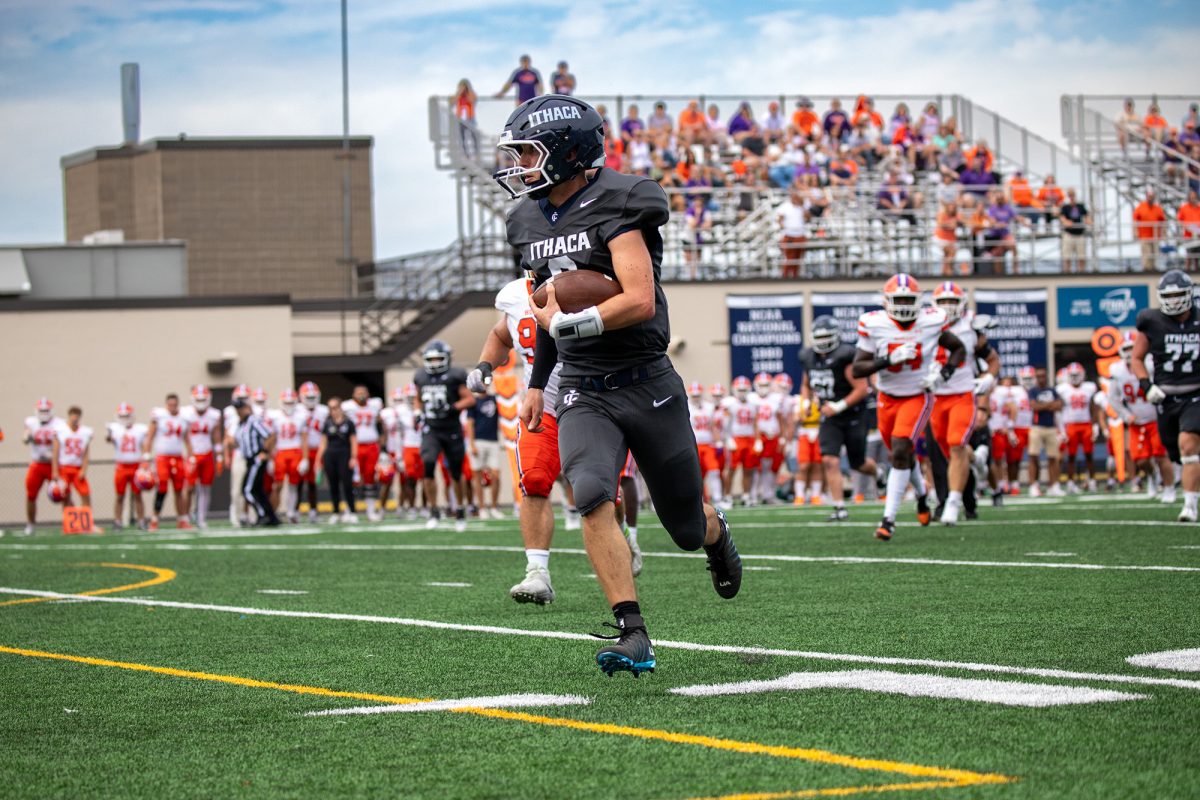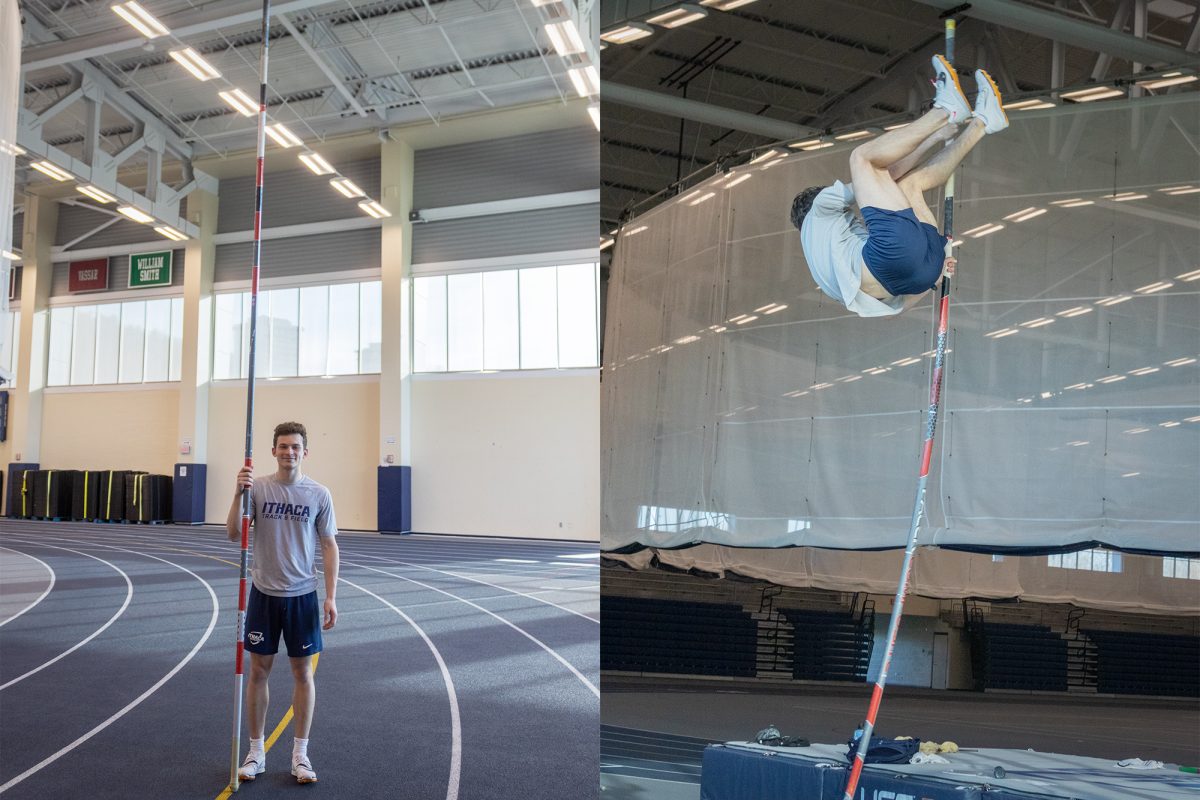Instead of finding the Ithaca College swimming and diving team doing laps in the pool at 6:45 a.m. Friday mornings, the women’s track and field team is jumping, sprinting and even pole vaulting in the water.
Jennifer Potter ’92, head coach for the women’s track and field team, has been training in the pool since her days as a runner at the college. Now, Potter has her team working in the pool every Friday.
“It’s a different environment and it keeps it interesting,” Potter said. “It gets the athletes off their feet so we don’t contribute to lower leg problems that is common in indoor and outdoor track.”
Potter said she has been able to utilize the pool to incorporate all aspects of track and field and also ensure that her runners are getting the most from these workouts.
“We have had high jumpers do jump drills over the lane lines,” Potter said. “We have raised the shallow end up to chest–level, waist–level height of water and have done plyometrics, sprint drills, hurdle drills. We have really done a little bit of everything in the pool.”
Plyometrics is a type of exercise where athletes use maximum force in short intervals to increase power in their jumps.
Mackenzie Lobby, a writer for Running Competitor and a runner, said track and field is plagued with leg injuries, and swimming has become a way for runners to get off their feet but still have an intense workout. She said that swimming has proven to be a great way for runners to rehab from injuries and prevent further injuries.
“Many of the track and field events involve a lot of high-impact training, so pool–running provides a great alternative to get your heart rate up with no major impact,” Lobby said.
The runners will run laps in the pool for set time intervals to get the same workout they would when running on a track.
“When you mimic the running movement in the pool, the resistance of the water allows an athlete to build muscle strength,” Lobby said. “The Law of Specificity suggests that if you want to get better at running, you must run, so pool running provides runners a nice alternative to over-ground running that still strengthens the running-specific muscles.”
Potter said that the college’s fairly new indoor pool, built in 2011, in the Athletics and Events Center has been very useful for the team. The pool has a 32’ by 75’ moveable floor system to enable a shallow or deep-water area.
“We are at an advantage with this pool because the floor raises and lowers,” Potter said. “So for example, our distance runners could do a long run just like they do outside in the water for like 45 minutes or half an hour.”
Senior jumper Kassandra Reagan said working out in the pool has helped.
“The pool keeps you in just as good as shape as working out outside without being cold and having tight muscles,” Reagan said. “For example, I had a torn hamstring and a limited range of motion, but I was still able to do all the pool workouts, which was a great help.”
Potter said one of the most interesting water workouts that the Blue and Gold does is “pool vaulting.”
“They will bring a pole in the pool made of PVC by one of the trainers and working on inverting and going in the deep end so there is that inversion feeling with water,” she said.
Junior hurdler Britney Swarthout said she enjoys training in the pool because it is different than training on the track.
“I think it’s a really great way to cross-train and allow us to get hard work in without the pounding of the track,” Swarthout said. “It is especially useful for those of us who do this in the winter and the spring.”
The main advantage of being in the pool is the resistance the runners get from the water, Potter said.
“This is something we don’t get on the track or in the weight room, so I think it’s a different and forgiving environment,” Potter said. “With the right instruction, it can be a real advantage for any program to have.”















